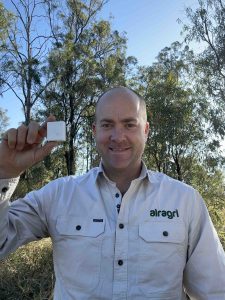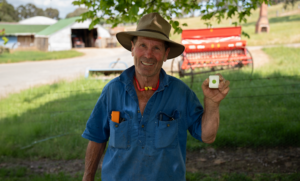Automated Safety
Farm Safety
Farm Management
Automated Safety
Farm Safety
Farm Management
Top 5 Lone Worker Devices for Farmers (2025 Review)
By James Diamond, March 6, 2025
Ensuring the safety of lone workers on farms is a significant challenge, especially in remote areas. The right lone worker device can be the difference between life and death in emergencies. In this review, we explore five of the leading devices available to farmers in 2025, highlighting their strengths and weaknesses to help you make an informed decision.

1. AirAgri PLD (Personal Location Device or “Bush Beacon”)
The AirAgri PLD, commonly referred to as the “bush beacon” among farmers, is specifically designed for agricultural environments and remote work.
Pros:
- Exceptional battery life designed to last days without recharging.
- Rugged design tailored for harsh farm conditions.
- Connectivity independent of 4G, utilizing satellite communications.
- Automated fall detection and real-time alerts.
- Simple, intuitive interface designed for farmers.
Cons:
- Not available at retailers, but you can receive the product in 2 – 3 business days.
- Subscription-based service is required for satellite connectivity.
2. SafeTcard
SafeTcard is a well-established personal safety device used widely across industries, including agriculture.
Pros:
- Compact and discreet design.
- Real-time monitoring with emergency alerts.
- Proven reliability in multiple work environments.
Cons:
- Relies primarily on 4G networks, limiting functionality in remote areas.
- Shorter battery life, requiring frequent recharging.
- Less robust against extreme weather and rugged use compared to agricultural-specific designs.
3. Blackline Safety G7
Blackline’s G7 series offers advanced lone worker monitoring with robust safety features.
Pros:
- Real-time GPS tracking and emergency response capabilities.
- Multi-function alarms including gas detection (optional).
- Cloud-based monitoring system.
Cons:
- Higher price point, particularly with additional sensor modules.
- Relies on cellular networks; potential connectivity issues in remote locations.
- Shorter battery life due to extensive feature set.
4. Garmin inReach Mini 2
Garmin’s inReach Mini 2 offers satellite-based communication, popular among outdoor enthusiasts and farmers alike.
Pros:
- Reliable global satellite connectivity.
- Compact and lightweight design, suitable for carrying on person.
- Two-way messaging and SOS feature.
Cons:
- Limited battery life compared to specialized agricultural devices.
- Small interface can be cumbersome for some users.
- Requires separate subscription service for satellite connectivity.
5. Spot Gen4
Spot Gen4 is a basic yet robust device focusing on affordability and simplicity.
Pros:
- Affordable and easy to use.
- Reliable satellite communication for emergency alerts.
- Rugged construction for outdoor use.
Cons:
- One-way communication limits interaction during emergencies.
- Limited features, primarily emergency alerts only.
- Battery life moderate, dependent on replaceable batteries rather than rechargeable options.
Why Choose the AirAgri PLD?
For farmers specifically, the AirAgri PLD stands out due to its combination of purpose-built design, long-lasting battery, and connectivity that remains reliable even in areas without cellular service. This “bush beacon” offers an essential lifeline, perfectly matched to the rugged and unpredictable nature of farm work.
Key Advantages of AirAgri’s PLD:
- Long battery life to ensure you’re always protected without daily recharging.
- Robust design built explicitly for the harsh realities of farming.
- Satellite-based connectivity guarantees reliability no matter your location.
Conclusion
Selecting the right lone worker device involves balancing reliability, connectivity, battery life, and cost. AirAgri’s PLD excels in these critical areas, making it an optimal choice for farmers who work in remote or isolated environments. To explore AirAgri’s innovative solutions further, visit airagri.com.au.

